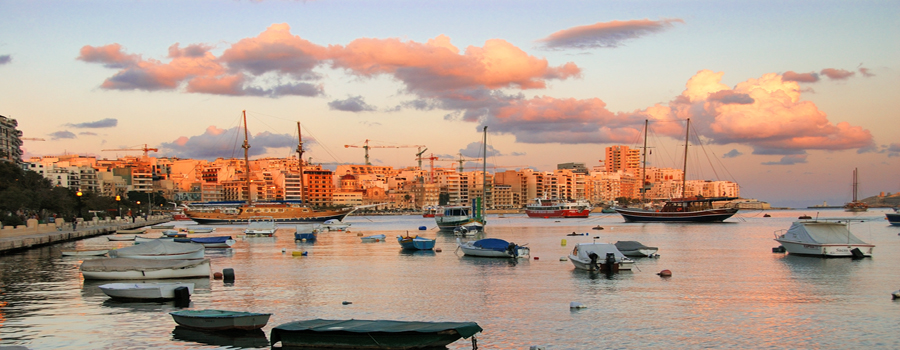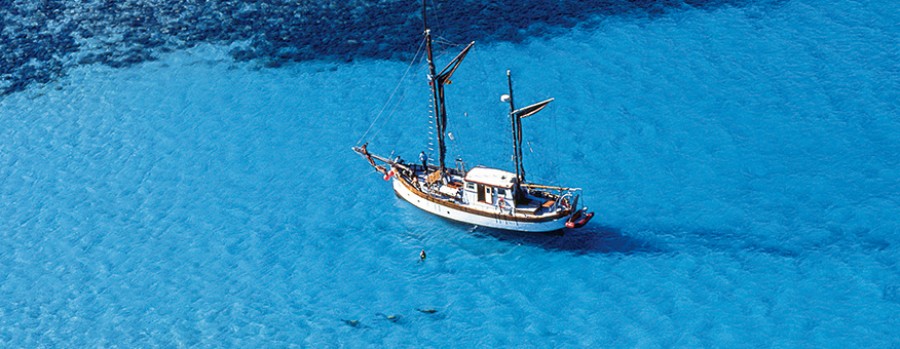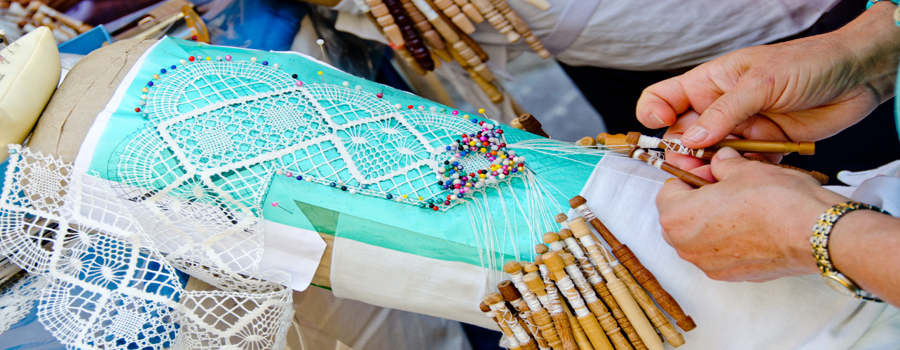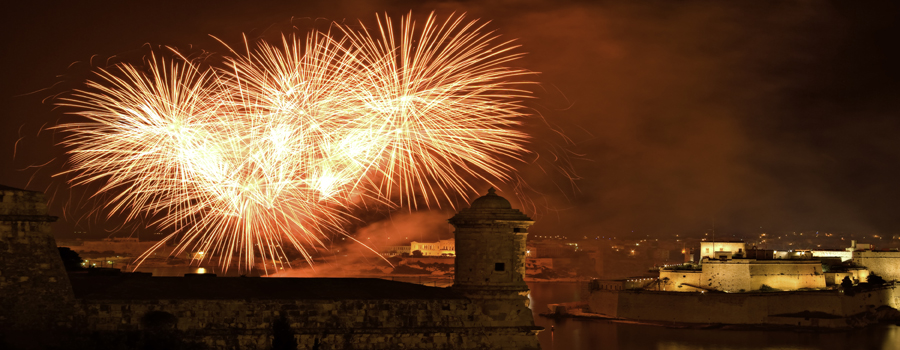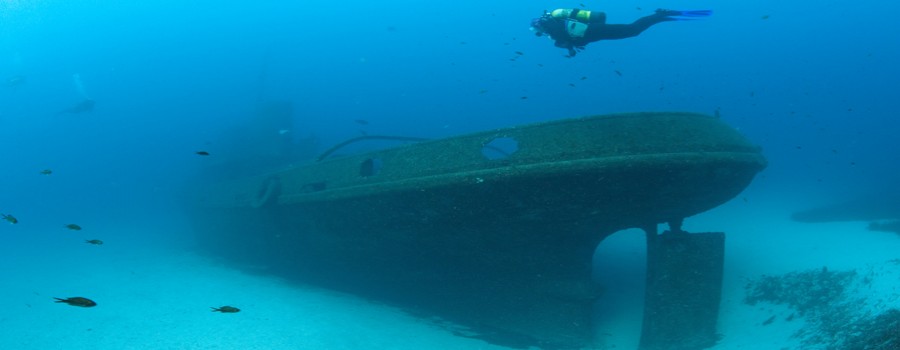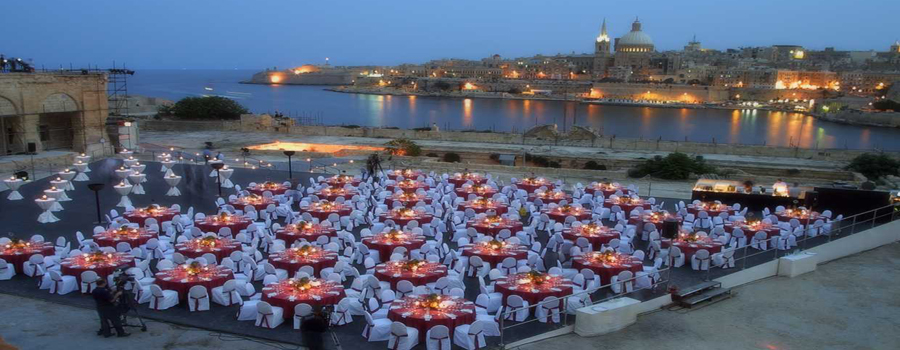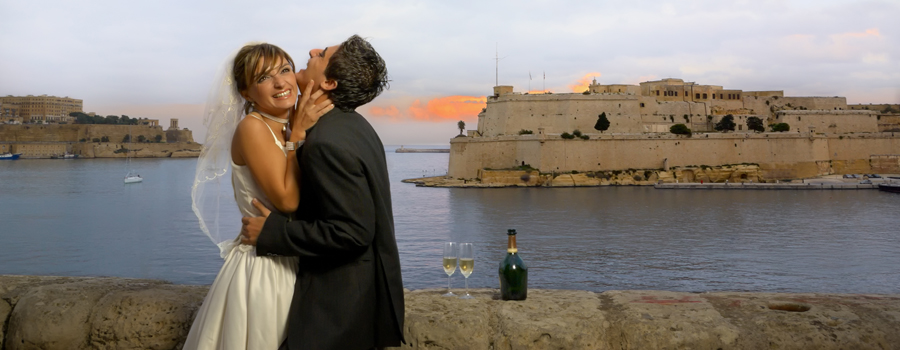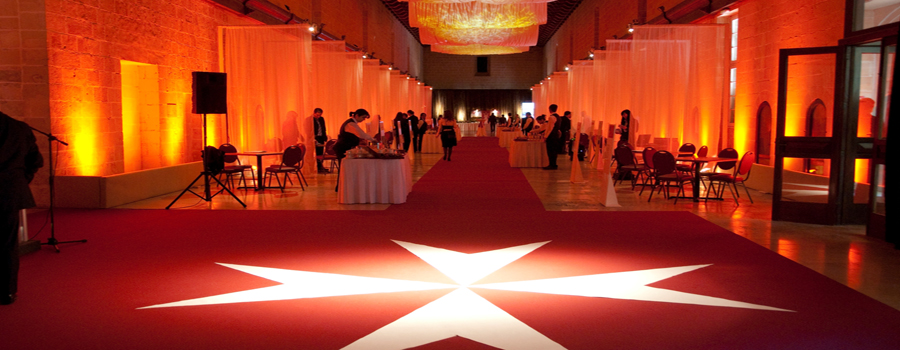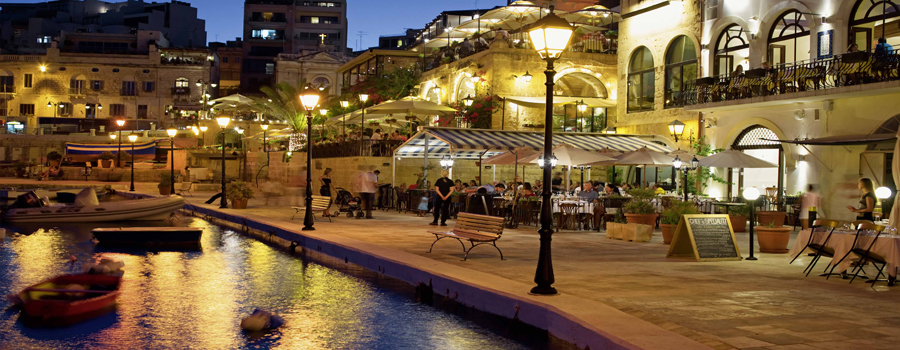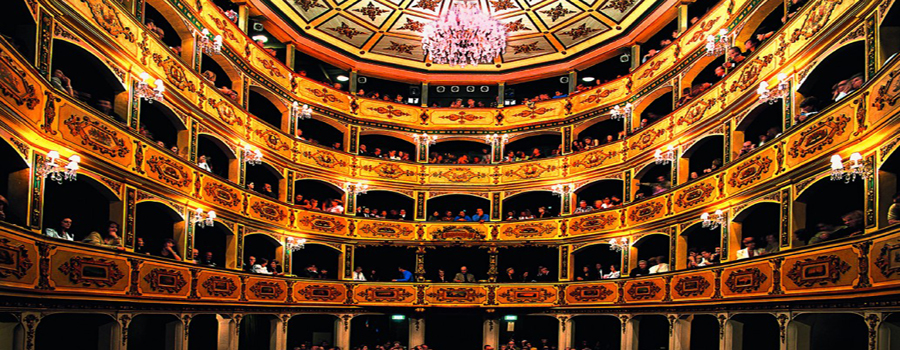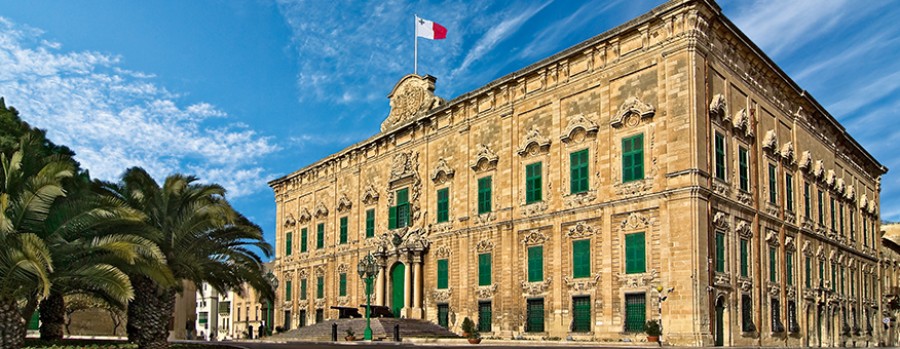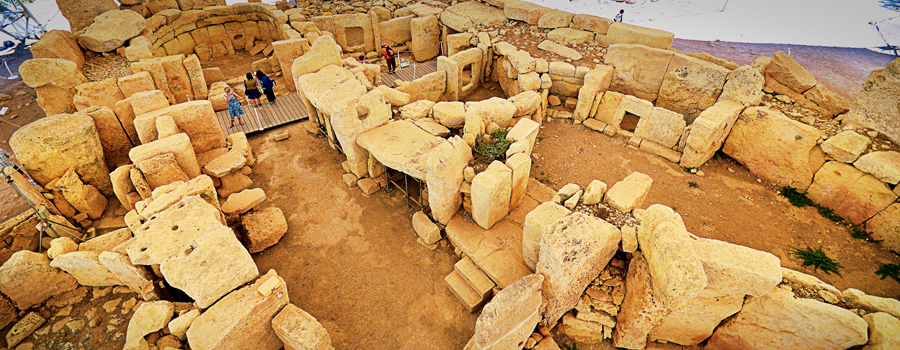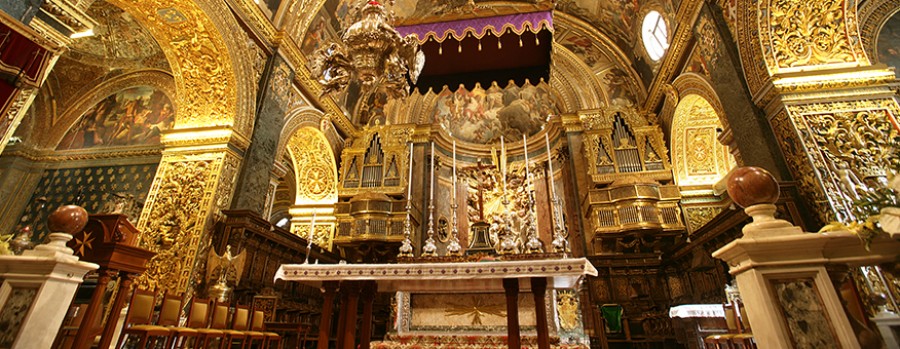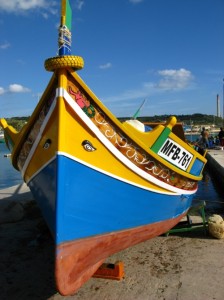 The Maltese islands
The Maltese islands
The Maltese islands include the main islands of Malta, Gozo and Comino. The Maltese islands lie at the cross-roads of the Mediterranean and are filled with history and colour. Our geographic location is unique. Blessed with year-round sunshine and a temperate climate, the islands are a popular, safe and friendly destination.
The Maltese islands offer you the best mix between culture and total relaxation. Malta’s capital city Valletta is a UNESCO World Heritage Site, as are Malta’s famous Megalithic Temples and the Ħal Saflieni Hypogeum. Valletta is described by UNESCO as “one of the most concentrated historic areas in the world.” Valletta has also been listed in CNN’s 20 most beautiful World Heritage Sites. Whilst having plenty to see and with a variety of interesting things to do, it can be just as much fun to lie back and relax in a splash of comforting sun or take a dip into the clear and clean crystal waters of the Mediterranean Sea.
The Maltese islands are an English speaking destination. They are no more than 3 hours away from most major European cities. The national carrier Air Malta, established legacy carriers and low cost airlines offer an excellent service with flights from all major European cities. Our climate gives the islands a little paradise throughout the year. The islands are small meaning that you spend your time doing things, rather than getting from one place to another. Our history and culture link us with many other nationalities and can be integrated into very appealing incentive programs. Our temples and archaeological remains are witness to the meeting of minds as far back as 6,000 B.C. The Maltese people are welcoming and proud of their islands and language. Safety is a right that still comes for free on the islands.
It is also possible to enjoy a variety of outdoor activities such as golf, tennis, cycling and quad biking. Water sports enthusiasts will find all they need: swimming, wind surfing, water skiing, scuba diving, snokerling and sailing. Trekking and walks around the Maltese countryside provide a glimpse of the islands’ innate beauty. Popular Maltese “festas” (feasts) combine religious festivity and popular celebration, and are colourful and spectacular events that should not be missed.
Here are 19 surprising facts about Malta and here are 10 photos which prove that the Maltese islands are amongst the most beautiful in the world!
Geography
The Maltese archipelago consists of three inhabited islands: Malta, Gozo, and Comino and two other uninhabited islands. They lie in the middle of the Mediterranean Sea, 95 kilometers south of Sicily and 288 kilometers north of North Africa. The total area is 316 square kilometers (Malta – 246, Gozo – 67, and Comino – 3). Malta has neither mountains nor rivers and is instead characterised by low hills with terraced fields on its slopes. Malta’s coastline has harbours, bays, creeks, sandy and rocky beaches and coves. There are 137 kilometers of shoreline. The longest distance in Malta, from the south-east to the north-west is only 27 kilometers, and the widest distance is 14 kilometers in an east-westerly direction.
Gozo, the island of the nymph Calypso, is smaller than its sister island Malta. Gozo’s countryside is greener, more spectacular, and has a distinct character. Flat-topped hills dot the landscape, while the coast has rugged cliffs penetrated by steep valleys and beautiful bays. More rustic and quieter than Malta, it is 14 kilometers long and 7 kilometers at its widest point.
The smallest inhabited island Comino is home to a handful of farmers. Neither cars nor noisy activities disturb the peace. The many bays and rocky coves in Comino and the crystal clear water are ideal for water-sports such as snorkeling and diving. There is a regular ferry service to Comino.
Climate
The Maltese islands offer something for everyone: with over 300 days of sunshine per year Malta has won awards for having amongst the (if not the) world’s best climate. Daily sunshine averages 12 hours in summer and 6 hours in winter. The hottest period is July to mid-September. Nights are regularly tempered by cool breezes from the Mediterranean. There is an average rainfall of 51 centimeters annually. There is no fog, snow, or frost in Malta.
Summers are hot, dry and very sunny. Day-time temperatures in summer are often mitigated by cooling sea breezes.
Spring and Autumn are cooler, except when the occasional Sirocco wind from Africa brings unseasonally high temperatures and humidity.
Winters are mild, with the occasional short cold spells brought about by the north and north-easterly winds from central Europe.
History
The first inhabitants of Malta originated from Sicily and settled in circa 5,000 BC. The megalithic temple builders reached the island in circa 4,000 BC. The unique megalithic temples which pre-date England’s Stonehenge were erected between 3,600 BC and 2,500 BC. However the civilisation which built them soon collapsed and Bronze Age settlers moved in. The Phoenicians, who used Malta’s harbour as a centre for their trading activities, arrived in the 8th century BC. The entry of the Carthaginians increased the islands’ strategic importance and attracted the attention of Rome. In 218 BC Titus Sempronius Longus captured it for Rome, starting an occupation that lasted more than 1,000 years. Christianity was introduced to Malta by St. Paul, who was shipwrecked here in AD 60. History is not clear about the later stages of the Roman occupation, but it is generally believed that the fourth and fifth centuries AD were a prosperous era for the Maltese. Once again, ownership of the island changed hands, with the Byzantine Empire taking over towards the conclusion of the sixth century until AD 870 when they capitulated to the Aghlabid governor of Moslem Sicily. The influence of the Arabs lasted long after the incursion in Malta by the Norman Count Roger in 1091.
A succession of European dynasties ruled the islands until 1530 when Charles V of Spain ceded Malta to the Knights of St. John. The most well known event in Maltese history occurred in 1565, when the Maltese, together with the Knights, heroically resisted the Turkish attacks, popularly known as the Great Siege of Malta. The Knights eventually capitulated to Napoleon in 1798, but the French occupation was very brief. The Maltese, together with the British naval forces, ousted Napoleon’s troops out of the island. British rule lasted from 1800 to 1964, when the Maltese islands gained their independence.
During the Second World War the Maltese islands were experiencing one of their hardest times in history with around 15,000 tons of bombs dropped on Malta destroying almost 6,000 houses and other buildings, killing and seriously wounding nearly 13,000 people. Malta’s airfields and harbours were very heavily attacked while the capital city of Valletta was almost completely destroyed. With food supplies at their lowest levels, Malta was on the verge of surrendering but the courage and stamina of the defenders was not dampened sufficiently by the German Luftwaffe. On 15th April 1942 King George VI from London wrote a message to the people of Malta: “To honour her brave people, I award the George Cross to the Island Fortress of Malta to bear witness to a heroism and devotion that will long be famous in history.” The George Cross served as a great boost for the island’s morale, bringing further determination to the population. The serious situation in Malta was relieved months later, with the providential arrival of the Santa Marija convoy on the 15th of August. A public presentation of the George Cross took place at the Palace Square in Valletta on 13th September, 1942. The George Cross was later officially incorporated in the Maltese flag, on the white canton on the left.
Malta become a Republic in 1974 and a full member of the European Union in 2004. On 1st January 2008 Malta become part of the EURO zone.
Click here to read The New York Times’s article about Malta’s tangled history.
Government
Malta has a democratic system of government with elections held every five years. The titular head of state is the President who is appointed by the House of Representatives. Legislative power lies in the hands of the House of Representatives. Executive power is exercised by the Prime Minister and his cabinet.
People
Today’s population of Malta is approximately 420,000 of whom approximately 29,000 people live in Gozo.
Language
Maltese and English are both official languages in Malta. Italian is widely spoken, with a good knowledge of French and German available.
Religion
The great majority of Maltese are Roman Catholic but the Maltese Constitution guarantees freedom of worship. There are also churches belonging to various other religious denominations, that hold religious services on Sundays in various localities.
Currency
Malta’s currency is the EURO. There is no limit to the amount of currency one may bring into Malta, provided that amounts exceeding €10,000 or its equivalent are declared if travelling from or to a country outside the European Union. Major credit cards, travelers cheques and Eurocheques are accepted at most hotels, shops and restaurants.
Banks
The Malta Financial Services Authority (MFSA) is the country’s single regulator for all banking, investment and insurance business. Its high regulatory standards are modelled on EU legislation and best practice, whilst at the same time allowing for the flexibility necessary in a modern and dynamic banking environment, without imposing undue bureaucratic burdens on operators.
Maltese banks offer all the services that are offered in the main financial centers. All major banks in most countries have either a direct contact or a correspondent relationship with local commercial banks and the Central Bank of Malta. There is a network of over 100 banks in Malta that offer all the recognised banking services, making this sector a modern and efficient one.
Foreign exchange facilities are available at the International Airport on a 24-hour basis all year round, and at most banks during the week until 4.00 p.m. There are also a number of automated foreign exchange machines and automated teller machines throughout the islands. Banking hours are usually between 8.30 a.m. and 12.00 p.m. from Mondays to Fridays. On Saturdays they are open until 11.30 a.m.
Dining & Drinking
Thanks to the perfect location of the islands right in the heart of the Mediterranean Sea, Malta has always been on the trading route between Africa, the Middle East and Southern Europe, which consequently influenced the country’s cuisine which is varied and offers a number of local dishes and delicacies. They include various fish, meat and other specialties such as pastizzi and figolla. There is a wide variety of good and reasonably priced Maltese wines. Foreign wines are also available. Maltese beer is excellent and foreign beers, although more expensive, are also available. Bars, restaurants, and cafes open between 9.00 a.m. and 1.00 a.m. and beyond. Restaurants open after 11.30 a.m. and 7.00 p.m. There is a great selection of bars, wine bars, night clubs and entertainment spots that one can choose from around the Maltese islands. These places are open until the early hours of the morning.
Electricity
Electric supply is 240 volts, single phase, 50 cycle. Square fitting, standard three-pin British plugs and sockets are used.
Entry requirements
Passport holders of most Commonwealth countries, UK dependencies and members of the Council of Europe and the EU countries do not require a visa.
Malta is part of the Schengen agreement which states that transiting from one country to another within the Schengen area is done without border controls. In fact, the Schengen visa makes it possible to visit all the countries in the Schengen area and to cross internal borders without further formalities.
Shopping
Shops are open between 9.00 a.m. and 7.00 p.m. with a three to four hour afternoon break. Shops are closed on Sundays and public holidays. Shops in tourist designated areas can stay open till 9.00 p.m. Shops sell almost all of the popular international branded goods.
Taxi service
Taxis can be identified by their all-white livery and indicative number plates. Black taxis usually indicate that they are part of a private network and are usually more cost effective. We also have yellow cabs which are cheaper than the normal taxis. However it is advisable to agree the cost of the journey with the driver beforehand. The Malta Tourism Authority publishes a list showing distances between the main towns in Malta and the relative cost of taxi rides which can also be obtained from the tourist information office at the airport arrival lounge.
Time zone
Malta is one hour ahead of GMT.
Tipping
A 10% tip at restaurants, hotels, and taxis is considered appropriate. However one ought to check the bill in case it has already been included.
Value Added Tax (VAT)
7% VAT is charged on accommodation and 18% VAT is charged on most other goods and services.
Visitors to Malta who are domiciled outside the EU and are travelling to a final destination outside the European Community are entitled to reclaim VAT on goods purchased for personal and family use during their stay in Malta and on which VAT has been paid.
Claims for refund of VAT cannot be made on consumable items which are wholly or partly consumed or used in Malta and on goods exported for business purposes.
Goods on which a VAT refund is claimed must be taken out of Malta in accompanied luggage within three months from the date of purchase.
Repayment of VAT shall only apply to goods on which the total amount of VAT paid exceeds Euro 24.00 . In addtion such VAT repayment is only on goods whose value from a single establishment as shown in a single receipt is not less than Euro 62.00 .
Such clams should be made on the prescribed form. The fiscal receipts in respect goods on which repayment is being claimed are to be presented as well.
Health
Malta has reciprocal agreements with various countries for health treatment. Prescribed medicinals are available.
Pet importation
Regulations regarding the importation of pets into the Maltese islands fall under the responsibility of the Veterinary Regulation Directorate within the Agriculture & Fisheries Regulation Department of the Ministry for Resources & Rural Affairs. Information can be obtained directly from the Directorate as shown below:
Phone: +356 2165 0393
Fax: +356 2165 0273
E-mail: petstravel.mrra@gov.m
Website: www.vafd.gov.mt/pet-travel-scheme
Water
Tap water is safe to drink throughout the Maltese Islands. Local and imported bottled mineral water is available from shops, supermarkets, restaurants and bars.
Public Holidays
The Maltese islands have 14 annual public holidays. With the exception of Good Friday, every public holiday is celebrated on a fixed day of the year.
The dates are the following:
1st January – New Year’s Day
10th February – Feast of St. Paul’s Shipwreck
19th March – Feast of St. Joseph
31st March – Freedom Day
March / April (date changes) – Good Friday
1st May – Labour Day
7th June – Sette Giugno
29th June – Feast of St. Peter and St. Paul (L-Imnarja)
15th August – Feast of the Assumption of Our Lady (Santa Marija)
8th September – Feast of Our Lady of Victories
21st September – Independence Day
8th December – Feast of the Immaculate Conception
13th December – Republic Day
25th December – Christmas Day
Passports & Visas
For information about visa applications please visit the website of the Maltese Foreign Ministry www.foreign.gov.mt
Driving
In Malta and Gozo driving is on the left. There are speed limits of 80 km/h on the open road and 50 km/h in built-up areas, unless otherwise indicated on relevant road signs.
If you intend to rent a car or drive in Malta, it is advisable to take out comprehensive insurance. National or international driving licences are accepted.
Useful telephone numbers
V. Tabone Travel (direct): 2353 3412
V. Tabone Travel (mobile): 9986 0114
Ambulance: 112
Consumer Protection: 2125 0221
Direct Dialling Code (Malta): +356
Directory Enquiries: 1182
Directory Enquiries: (Go Mobile) 1187
Directory Enquiries: (Vodafone) 1189
Emergency: 112
Emergency Rescue by Helicopter: 2124 4371
Emergency Rescue by Patrol Boat: 2123 8797
Emergency Vet Services: 5004 3888
Fire Brigade: 112
Flight Information: 5230 2000 (rate per call €1.00) *
Government Information Service: 153
Gozo Ferry: 2155 6114
Hospital – Gozo: 2156 1600
Hospital – Malta: 2545 0000
International Code (to make an overseas call): 00
Lost Property: 2122 4781
Overseas Operator: 1152
Passport Office – Gozo: 2156 0770
Passport Office – Malta: 2122 2286
Police: 2122 4001-7
Time Check: 195
Weather Information (basic): 5230 2021 (rate per call €1.00)
Weather Information (detailed): 5250 2002 (rate per call €5.00)
Public Transport
Bus service
The public transport in Malta and Gozo uses a fleet of modern, air-conditioned buses, offering an affordable transport system on a wide route network across Malta and Gozo.
The bus service connects main towns:
- to each other
- to the principal bus terminus in Valletta
- to the Malta International Airport
- to the Gozo ferry terminals and
- to the popular tourist area of San Ġiljan (St. Julian’s) and Paceville
Airport express
There are four airport express services X1, X2, X3 and X4 connecting main towns to the Malta International Airport.
Gozo bus routes
There are 10 bus routes in Gozo which run every hour in each direction and service 301 between Victoria (Rabat) and the Gozo ferry terminal in Mġarr which operates every 30 minutes.
Contact us at V. Tabone Travel should you require any further information or to obtain a quote.




